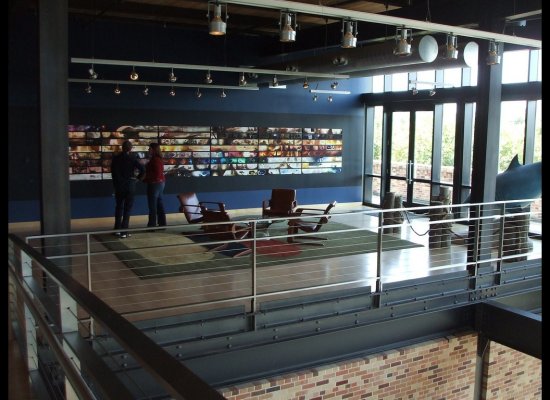Thursdays at the Huffington Post, Rana Florida, CEO of the Creative Class Group, will answer readers' questions about how they can optimize their lives. She will also feature conversations with successful entrepreneurs and thought leaders about how they manage their businesses, relationships, careers, and more. Send your questions about work, life, or relationships to rana@creativeclass.com.
Dear Rana:
Our company is investing a lot of money in a redesign of its headquarters. Rather than pay a big consulting fee to an outside company, we thought it might be better to form a design committee, with representatives from various parts of our company, so that every discipline can have their say about functionality and design. We have been going around in circles, unable to reach a consensus about the format of the space. Offices or open bullpens, conference rooms or cubicles, ping-pong tables and beanbags or libraries and cafés and restaurants? The only thing we can agree on is to use the budget on design and construction rather than wasting it on expensive consultants. Do you know any great design sites or readings that can help?
Jayson
Bethesda, MD

Pixar Headquarters in Emeryville, California
Photo credit: Flickr user satomiichimura
Jayson,
The space you work in is very important to the output of your company's products and services. I toured Mayor Bloomberg's office recently and it provided a refreshing take on office design. When one of the most powerful mayors in the world decides to take himself out of the fancy corner office and work in a small cubicle in close proximity to his colleagues it makes a powerful statement.
Recent articles like "Designs to Make You Work Harder," a great summary of "new" approaches to office design in the Wall Street Journal, and "Redesigning: Cubicles" in Fast Company may provide the inspiration you and your colleagues need to get past your deadlock. You might also want to look at my Creative Spaces feature on unique and innovative offices.
Perhaps, however, you might change your thinking about consultants if you realize that your upfront investment might just pay off in increased productivity. Christian Unverzagt, assistant professor of practice in architecture at the University of Michigan Taubman College, agrees, saying,
When you look at design as a verb (to design) rather than a noun (a design), you open up the potential for a unique solution to address the complex needs of a given problem. Working with a design professional can help move the process forward and make the most of your construction budget, helping a company prioritize its collective ambitions while addressing the needs of the individual staff.
He offers websites like Architizer.com and Archinect.com to help research projects similar to yours. Ideo also provides expert consultation on design; if you prefer a "one stop" approach, furniture manufacturers like Steelcase and Herman Miller also offer consulting services.
If you are determined to do it in-house, here's what two other experts have to say:
Chris Benfield, principal of Benfield Partners in New York, recommends that you read Tim Brown's book or watch Brown's TED talk on design thinking. Using his concepts will allow your committee to dig deeper and get at the core of what's really important to the culture of your office and what's needed for its physical environment.
Bruce Kuwabara, partner at Kuwabara Payne McKenna Blumberg Architects, says,
You need to develop a vision of how you want to work and play. If you think about your space as a flexible loft, then you can be more experimental and innovative in terms of trying out new ways of working. Set up working groups to think through every area and element of design.
Office environments are as varied as the companies that they house. Whether it is Google's campus-like Mountain View headquarters or a fun and wild setting like Zappos' Las Vegas offices, there are so many more exciting options now than there were decades ago. A successful workspace is one that keeps workers productive, inspired and engaged.
